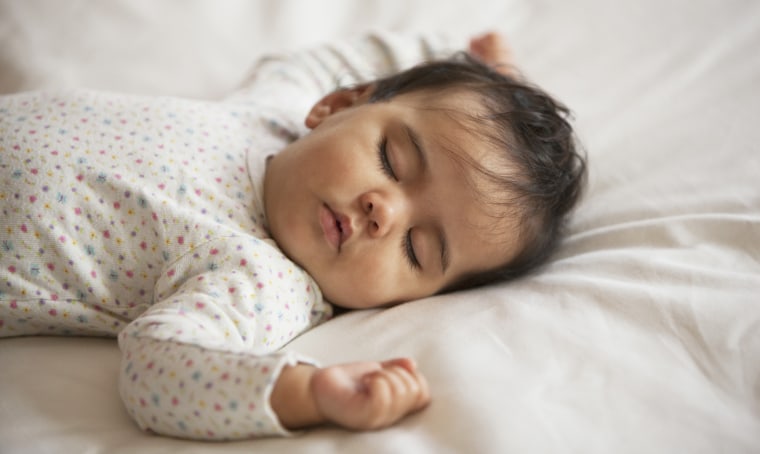For parents, any tool to help your baby sleep is a welcome one.
White noise for babies — which resemble sounds from the womb and even helps some adults sleep — can be a great sleep aid as long as parents are using it correctly.
So what should parents look for when putting on white noise? And is it safe for babies? Here's everything you need to know.
Is white noise for babies healthy?
Though white noise machines have been around for several decades, they have become more popular over the past several years as a way to help babies fall asleep sleep faster, stay asleep longer, and minimize stress on the parents.
A 1990 study published in the Archives of Disease in Childhood found that out of 40 babies, 80% fell asleep within the first five minutes of hearing white noise.
According to Dr. Danielle Grant, a pediatrician with Texas Children’s Pediatrics, white noise can help soothe babies and block out some noises in the household, which may decrease their crying and make it easier for them to fall asleep.
“It allows the baby to focus on one noise as opposed to maybe toddlers making noises, clanging of pots and pans — these kinds of normal household noises that you hear everyday,” Grant tells TODAY.com.
What are the risks of white noise for babies?
White noise for babies can be helpful, but Grant says it’s important for parents to make sure that it is set to an appropriate volume.
The target noise threshold for most newborn nurseries is under 50 decibels, and information about the maximum noise threshold is available on many white noise devices. Since some of these devices are able to radiate a maximum decibel much higher than 50, it is recommended that parents adjust the decibel setting or place the device several feet away from the baby’s crib.
“The American Academy of Pediatrics recommends that noise devices are kept 7 feet from where the baby is sleeping,” Grant says.
Another good guide is to test whether you can hear your baby over the noise.
“Normal speech is in the range of 25 to 50 decibels, so you want to make sure that the noise machine isn’t so loud that you can’t hear your baby crying or upset,” Grant said.
Ultimately, Grant says parents just need to be aware of how many decibels are being radiated from the device and take the appropriate precautions to make sure the volume and distance are right for the baby.
Should you use white noise for your baby?
Ultimately, the decision on whether or not to use white noise for babies should simply depend on whether it seems to help, Grant says.
“I think the biggest thing is some babies just might not like it,” Grant said. “It might not be their thing. Like a baby who has a pacifier — it’s really hard to push the pacifier on a baby who just spits it out every two seconds. So I would make sure that the parents are in tune with what the baby responds to.”
